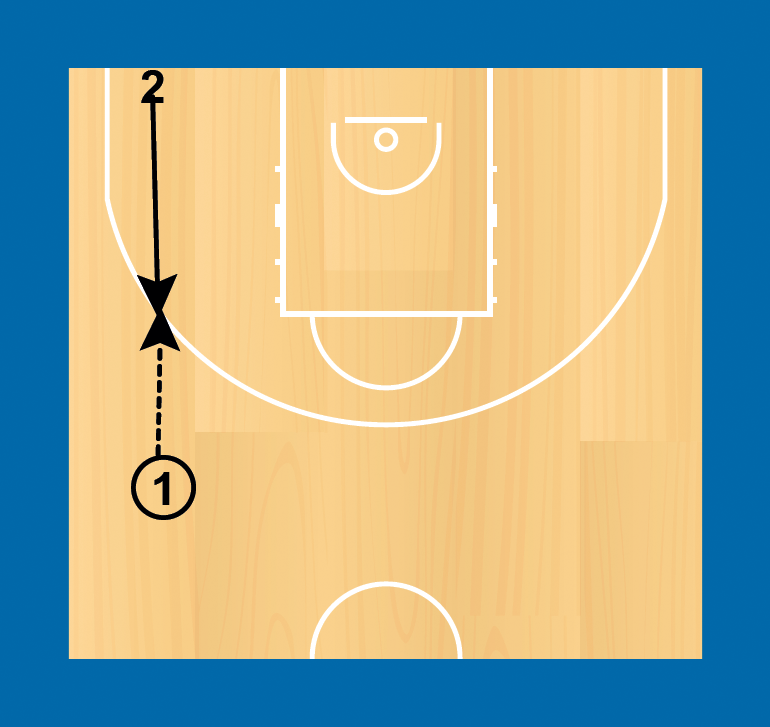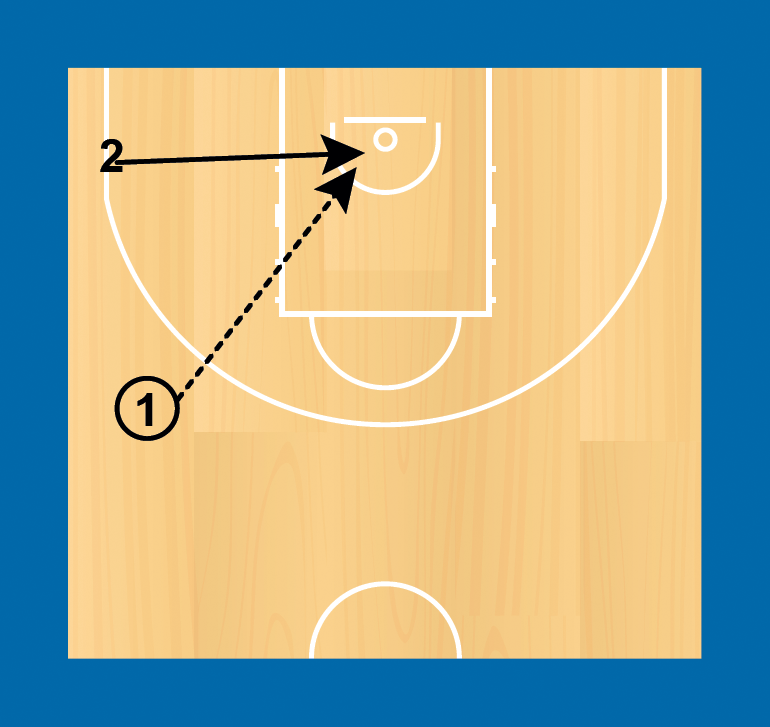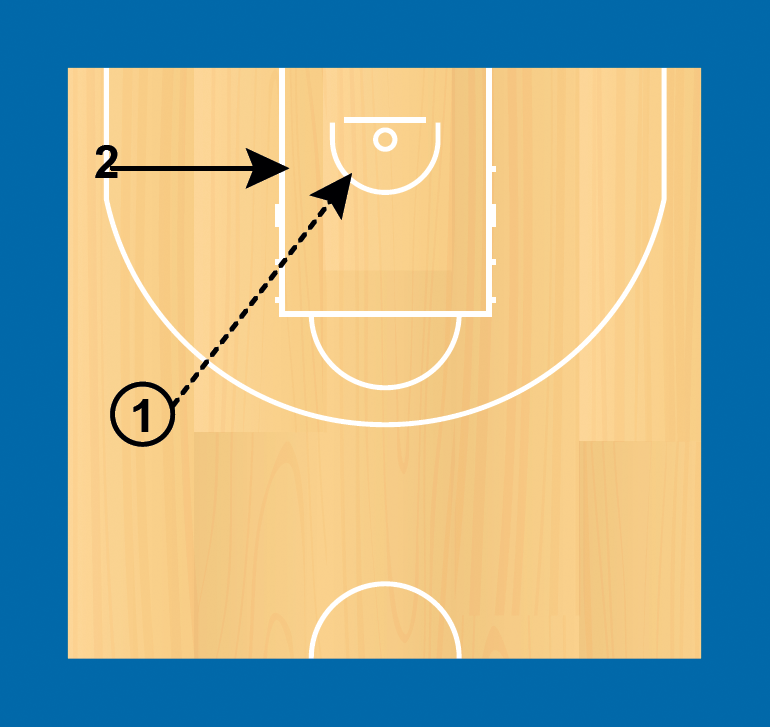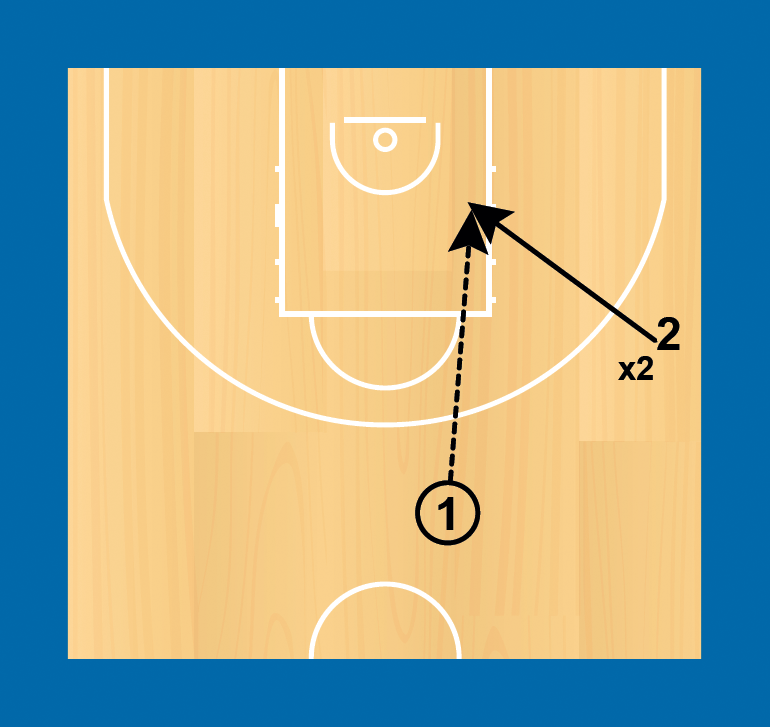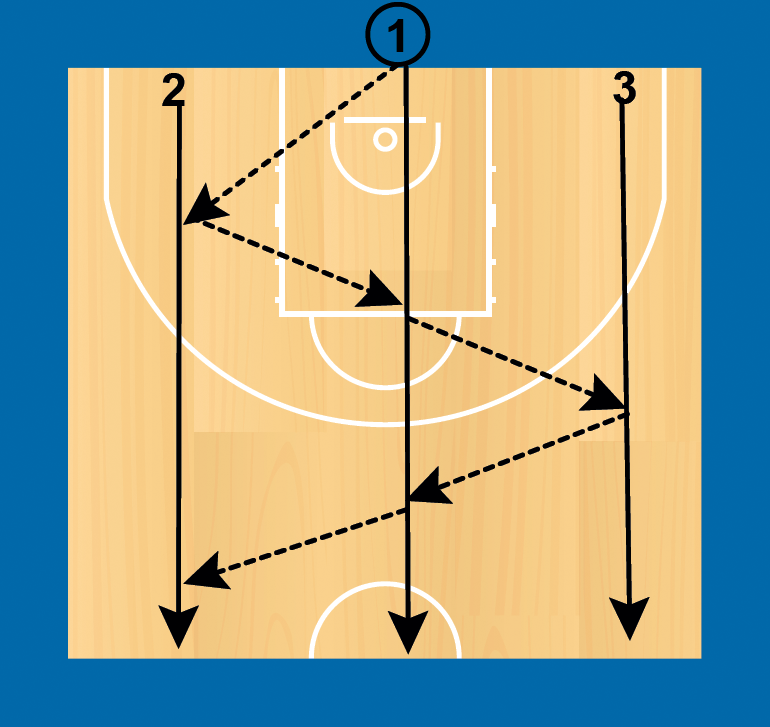Level 1
2.2.1 Getting open – some fundamentals
The following guidelines will also help:
- Use a change of pace, or even stop and then start. A person moving at a constant pace is predictable and easy to guard;
- Use change of direction (particularly with change of pace) and step into or across their path;
- If you can see the back of the head of the person guarding you, they can’t see you – it is time to cut!;
- Moving away from the ball can be effective, particularly if your opponent thinks that you are “out of the play”. Once they have relaxed, you can attack!
- Always give a target with your hands for where you want the ball to be passed – have your hands ready to catch the ball.
Straight Cut
Players will usually be taught to pass and catch while standing still because this allows them to focus on those particular skills, however, basketball is a dynamic game and players must quickly be introduced to passing while on the move and passing to a team mate that is moving.
Players can quickly progress to “leading” for the ball, simply by having them run towards the player that will pass the ball to them. This is a “straight cut”.
Young players will often stop their cut before catching the ball, which gives a defender the opportunity to run past and catch the ball. Players should be encouraged to keep running until they have caught the ball – a small jump in the air as they catch the ball will help them to stop.
Next, players need to learn to pass the ball to someone who is moving, but not directly towards them. There are many examples of when this will happen in a game, and it can be practiced anywhere on the court.
Players must learn to aim their pass ahead of their team mate. This is not an issue when the team mate is running toward the ball. How far in front they need to pass the ball will depend upon how fast their team mate is moving and how far away they are.
It is important during practice to give as many opportunities to practice passing as possible and the coach should always consider having players act as the “passer” in an activity rather than the coach.
One of the most common examples of a straight lead that moves away from the passer is a “back door” cut toward the basket, when the defender is denying the pass.
Finally, players must learn to pass while on the move. There are many activities that can be used.
A simple activity is to have players in 3 lines, moving up the court passing the ball between each other.
Obviously a player that is running with the ball must be dribbling it (otherwise it would be a travelling violation) and players need to learn to pass “off the dribble”.
In this activity, 1, 2 and 3 are moving down the court (as quickly as they can):
- 1 passes to 2 and then leads toward 3;
- 3 dribbles the ball initially and then passes to 1;
- 1 catches the pass and immediately passes back to 3 (who kept moving forward);
- 1 now moves toward 2 to receive a pass
